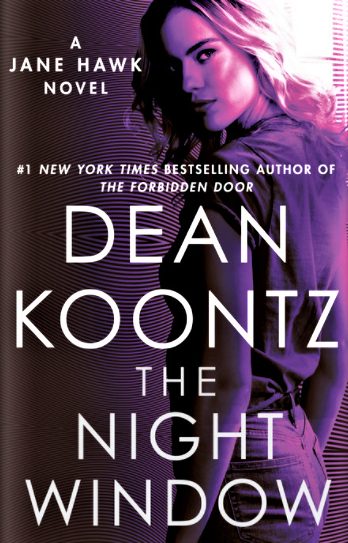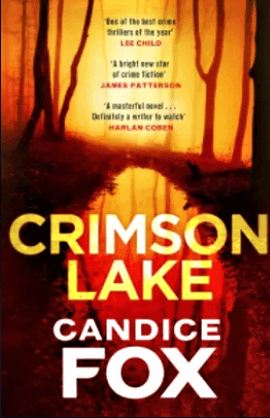
Ever had that shocking experience of someone deciding to illuminate you with some big truth about the world before you were ready, and it caused you to rethink everything? Ironically, I’m pretty sure future-history books will use that as an aptly comical description of “Living on Planet Earth between 2012-2022.”
When something comes at us out of left field, it can trigger a fear-based protection instinct within us to simply reject any new data right away. There’s an opening-power in the act of asking questions and being curious, however, I have found that it’s best if a question gets asked before the answer is offered; to do so in reverse can be disastrous.
This isn’t because the new information isn’t relevant, but because the delivery of that information felt like an unwelcomed assault; “Bam! Deal with it!” The receiver of that communication can feel shocked, resent that they are being forced to change, and feel it’s not safe for them to even consider this new “truth” from their current perspective and circumstances.
When the external world changes and challenges us at such a fast-pace, it can cause feelings of uneasiness. There needs to be room in our inner world for new information to come in; especially if that data challenges the validity of our known truths, and our foundational understanding of reality. As such, asking questions is very important for new information to be able to be considered and having room within us to settle. This simple process can change our neurology, and ultimately, our lives.
As it turns out, what we experience in our imaginations is not that different from how we experience reality. New brain imaging research shows that by us simply imagining a threat, or joyful experience, it lights up the same regions of our brains, as if are literally experiencing that moment. This “trick” is often used by Olympians, who train their brains and emotions through powerful visualization practices.
“Although any literary genre can lend itself to teaching critical thinking skills, the detective novel (is) an excellent curriculum source in that it encourages discussion topics, such as problem solving (and) issues of moral responsibility.”- Vanessa Clayton (Yale-New Haven Teachers Institute)
Reading mystery novels is a great way to practice and model a template-of-asking-questions for our brains, and to be curious about the things we don’t understand with excitement, instead of fear; as it’s not personal to us. As the reader, we are not the protagonist, and stories are a safe way for us play with uncertainty. However, as it turns out, we aren’t as unaffected by what we consume and read as we may believe. If we are invested in a story, and genuinely relate to the characters’ struggles, then we can feel a real connection of compassion.
We’d likely all agree that’s important for our well being to feel connected to others. However, our ability to feel authentically tapped-into the moment can include many other avenues. I can feel deeply connected to a certain memory and feeling, an object, while dancing, or out in nature, or simply curled up with a book. And apparently these solo activities are also affecting our brains to create a more positive neurology.
It makes me wonder if during these last two years of separateness, we’ve actually adapted to find other ways to feel connected? Perhaps we can take our deep attachment and involvement to the fiction we love, and bring it out to the real world too.
“It does not do to dwell on dreams and forget to live.” – Dumbledore (J.K. Rowling)
From cloak and dagger intrigues, to closed-door riddles, and to stories featuring eccentric and exasperatingly charming detectives; mystery novels have something intriguing for all readers, to keep us happily captivated and questioning.
Today’s list focuses on fascinating characters who aren’t the typical heroes. Please share your picks for mystery novels in the comments below for future lists.
Dean Koontz: Jane Hawk Series, Book 1 The Night Window

Jane Hawk was a rising FBI agent, until devastated by her husband’s mysterious death while on active duty. Something about those circumstances strikes her as off, and she begins to do what she does best- dig.
The web that Hawk falls into, and begins to unravel is frankly, beyond imagination.
To keep an unbelievable conspiracy of a planetary-control plot from coming out, the sharks start to circle Hawk. A Vegas mob boss teams up with a homicidal sociopath. A pair of brutal contract killers, with cutting-edge sci-fi tools emerge, along with several well funded behind-the-scenes villains; all rising up against Hawk to threaten her and her young son.
However, as so often happens, when the darkness rises, the light rises in proportion and pushes back.
Hawk sacrifices so much more than she even thought possible in order to peruse her husband’s killers and to bring the truth to the surface. Even though this series reads as one woman verses the world, the truth is, Hawk has a lot of help. Throughout this series, several everyday citizens bravely rise up, coming to Hawk’s aid in inspiring and innovative ways, in order to counteract the advancing darkness hell bent on controlling everyone.
The Night Window is the first book of a five book series, which follows an extraordinary heroine and her long-sought noble goal of truth and freedom, ending in a shocking and unforgettable finale.
Candice Fox: Crimson Lake

Detective Ted Conkaffey’s life changed in a matter of moments.
On his day off, Ted decides to go fishing, and stops on the side of the road near a bus stop to readjust his fishing rod that’s banging around in the backseat. He speaks with a young girl who’s waiting for her bus, making sure she’s safe, and heads off for a day of fishing and relaxation. After Ted leaves, the girl is abducted and assaulted, however “witnesses” recall Ted’s car on the side of the road, and somehow Detective Conkaffey finds himself under arrest by his own colleagues.
Since the evidence is spotty at best, Ted is released from prison, but his life and reputation are ruined. He escapes north, to the humid, croc-infested wetlands of Crimson Lake Australia, to meet up with Amanda Pharrell, an unusual PI who’s looking for an “assistant”.
With bright green hair, piercings, and several odd personal “rules”; such as a staunch “never ride in a car ” policy, Pharrel is a larger than life character and an outcast herself. Maybe it’s her own murderous and mysterious past that helps her to be such a good private investigator, working tirelessly to track lost people in the Australian outback. Her latest case is to find missing author Jake Scully, and she enlists help from the only person in town who is more hated than she is: Ted Conkaffey.
Every scene between Conkaffey and Pharrel is dynamic, awkwardly amusing, and full of juxtaposition. Used to being lead detective, Conkaffey balks at the notion of being an assistant to the eccentric PI. However, with slim to none options for employment, and although moving to a town called “Redemption Point”, where it seems the locals aren’t actually too keen on second chances, Conkaffey has no other choice but to sign up to play Watson to Pharrel’s Homles.
As such, an odd couple is formed when these two characters team up, while trying to manage their battle of wills, and dense personal baggage. The duo hits the road to solve mysteries; Ted slowly driving his car, frustratingly inching along, while Amanda proudly pedals her bike right beside him.
Sue Ann Jaffarian: The Ghost in the Polka Dot Bikini

For a more playful and lighter mystery, you may wish to check out The Ghost in the Polka-dot Bikini, by Sue Ann Jaffarian. “Author and mere moral skating on the edge of murder, madness, and mayhem.” With such a bold statement on her website, Jaffarian had me hooked before I even read one word of her books. Jaffarian has several published and successful series, however when a librarian friend recommended The Ghost of Granny Apples Series, I started my exploration into Jaffarian’s world there. The main series has nine books, as well as three digital- only novellas.
While on a Thanksgiving getaway to Catalina Island, ghost whisperer and paranormal TV show host, Emma Whitecastle, crosses paths with a ghost frolicking in the surf wearing nothing but a polka-dot bikini.
Tessa North was a Hollywood starlet who died on Catalina shortly after the assassination of Bobby Kennedy in 1968. Tessa shares with Emma that she is patiently waiting for the return of “Curtis”, before she can cross over to the other side. To help the winsome, bikini-clad spirit, Emma enlists the help of her ancestor “Granny Apples” in order to learn more about who “Curtis” is, and to unravel circumstances of Tessa’s death.
However, Emma’s probe into the Tessa haunting somehow leads to a brutal murder that’s a little too close to home. Hidden secrets of Emma’s former father-in-law, director and producer George Whitecastle, suddenly come to the surface, making the things even more complicated and raising the stakes for Emma. Despite new challenges, Emma is not giving up on helping Tessa, as she explains to Granny Apples, if only to keep her from spending eternity running around half naked.
Fans of both mystery and paranormal genres will find a lot to like with this playful series.
Agatha Christie: Murder on the Orient Express

No mystery book list would be complete without Agatha Christie. “The Queen of Mystery”, Christie published sixty-six detective novels and fourteen short story collections over the course of her distinguished career. I’m not sure anyone is qualified to critic Christies’ work, so why not let her share one of her top picks? A few years before she passed away in 1976, 85-year-old Christie shared a list of her own top 10 works. One of Christie’s choice for must-read novels is the classic, Murder on the Orient Express (1934). This novel marks the tenth book starring renown Detective Hercule Poirot. Christie ranked this title in her top picks, as it was “a new idea for a plot”, taking Poirot in a whole new direction.
The story takes place on the Orient Express train, which due to a snow storm, has come to a stand still on the tracks. A passenger is murdered, and Detective Poirot, who making his way home to London, finds himself tasked with trying to solve a murder, and keep everyone safe, as he quickly realizes they are all trapped on the train with the murder.
Murder on the Orient Express is celebrated as one of “the most widely read mystery of all time,” and has been adapted many times, including a 2017 hit film directed by Kenneth Branagh and starring Johnny Depp, Michelle Pfeiffer, Judi Dench, Penélope Cruz, and Daisy Ridley. (P.S. The audiobook is excellent as it’s also narrated by Kenneth Branagh).
An avid book reader and proud library card holder, Angela is new to the world of e-Readers. She has a background in education, emergency response, fitness, loves to be in nature, traveling and exploring. With an honours science degree in anthropology, Angela also studied writing after graduation. She has contributed work to The London Free Press, The Gazette, The Londoner, Best Version Media, Lifeliner, and Citymedia.ca.
